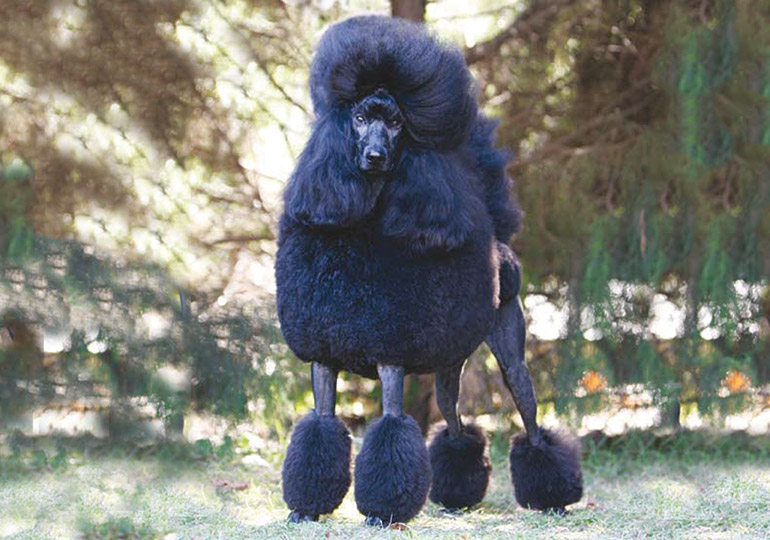Breeds
Poodle (Standard)

GROUP 7 - NON SPORTING
History
The Poodle was developed as a water retriever in Germany, Russia and France from the 16th to 19th centuries. Small Poodles were also used to find truffles. The word 'Poodle' originated from the German Pudel or the Russian pod-laika, both referring to splashing about in water. The French call the Poodle caniche, which comes from their word for'duck-dog', indicating the Poodle's water retriever history.
The Poodle is a traditional breed for circuses, even appearing as a circus performer on the goldfields of 19th century Australia. It has long been seen as a glamorous companion but many fanciers are now reintroducing the Poodle to its original work.
Characteristics
The Poodle has a unique, profuse coat and is a very active, intelligent, well-balanced and elegant dog with a proud carriage. It has the temperament, substance and agility required in an excellent companion and performance dog. The Poodle must move freely with a light 'springy' rather than 'bouncy' gait, and retain a steady topline.
The Poodle comes in three sizes, with the only variations in each breed standard being size. The Standard must be 38cm or more in height at the highest point of the shoulder, and is usually well above 55cm, the Miniature is between 28cm to 38cm, and the Toy less than 28cm.
Temperament
The Poodle has an active, friendly, confident and very intelligent temperament, and is easily trained. A certain reserve may be shown to strangers but any form of shyness, nervousness or viciousness is unacceptable in the Poodle.
Appearance
The Poodle is a normally constructed dog without exaggeration. It has a proud carriage standing and moving, its tail held high and a long, strong neck suited to its work. The breed has a long, clean-lined head and strong and well-chiselled foreface. The typical Poodle expression requires a correct head and foreface, a dark almond eye and long, wide, low-set ear leathers hanging close to the face. The profuse coat is dense and of harsh texture for water retrieving. The traditional lion clip is strongly recommended for showing. All solid colours are accepted.
Maintenance
Pet Poodles require a daily eye, rectum and foot check, weekly brushing and ear cleaning. Every six weeks a professional bath, ear clean, nail trim and coat clip is in order. Show Poodles require a weekly bath and expert trimming from an early age, especially during coat change at 10-18 months. Diet, exercise and training should maintain a healthy weight, good muscle tone and optimal mental stimulation. Formal exercise should not be overdone with young Poodles and care taken in hot weather.
Health and Suitability
Responsible breeders screen for PRCD/PRA in the Toy and Miniature varieties, and for general eye health and hip scores in the Standards. Other screening tests are available see the Poodle Club's 'Healthy Poodles page at wwww.poodleclubnsw.com.
Poodles are trained easily in all performance areas and make excellent companion and family dogs based on the most appropriate size. Supervision is necessary where they mix with children, especially very young children. Poodles thrive with early socialisation, good basic training, consistent expectations and sensible, loving human companionship. Poodles should not be left alone regularly for long periods, but should be trained when young to accept short periods alone.
Words: Tom Mangan on behalf of the Poodle Club of NSW
Image by Ron Bowden Photography
In Conclusion
Now you know a little about the Poodle (Standard) and have decided this is the dog for you, or you would like more information, please make contact with the breed club or your State controlling body for purebred dogs. They will be able to give you information about available puppies and also suggest dog shows where you can see the breed and speak to breeders. In this way you will gain a better perspective of the Poodle (Standard) and its needs and whether this breed would suit your lifestyle.
Breeders
Sorry, there are currently no breeders advertising for this breed. If you are a registered DOGS NSW breeder and wish to advertise here please create an advertisement here.


